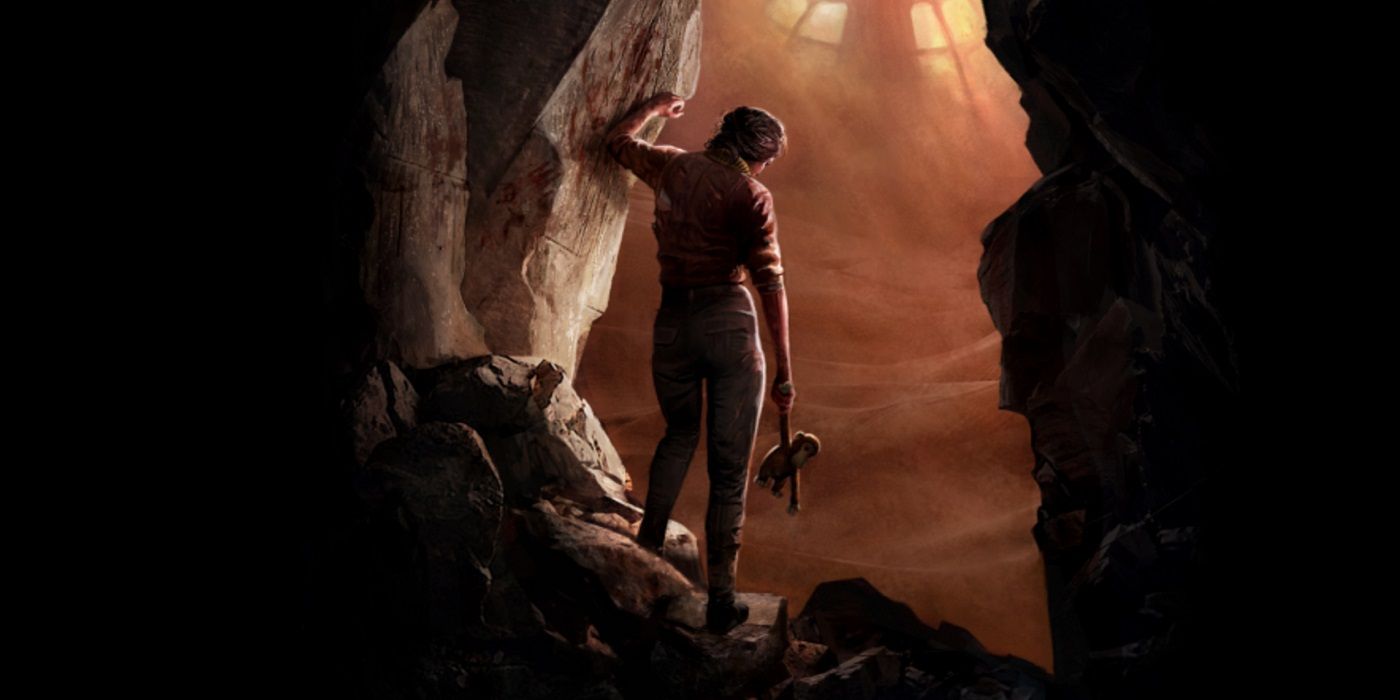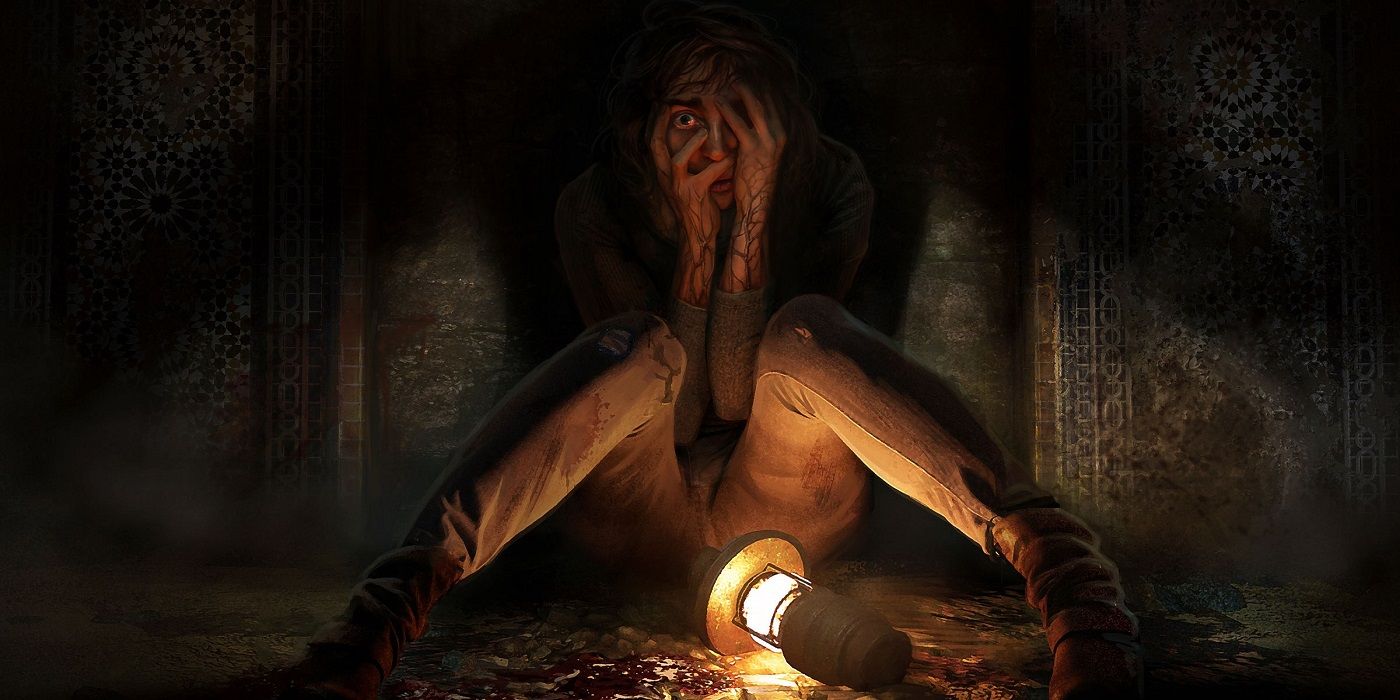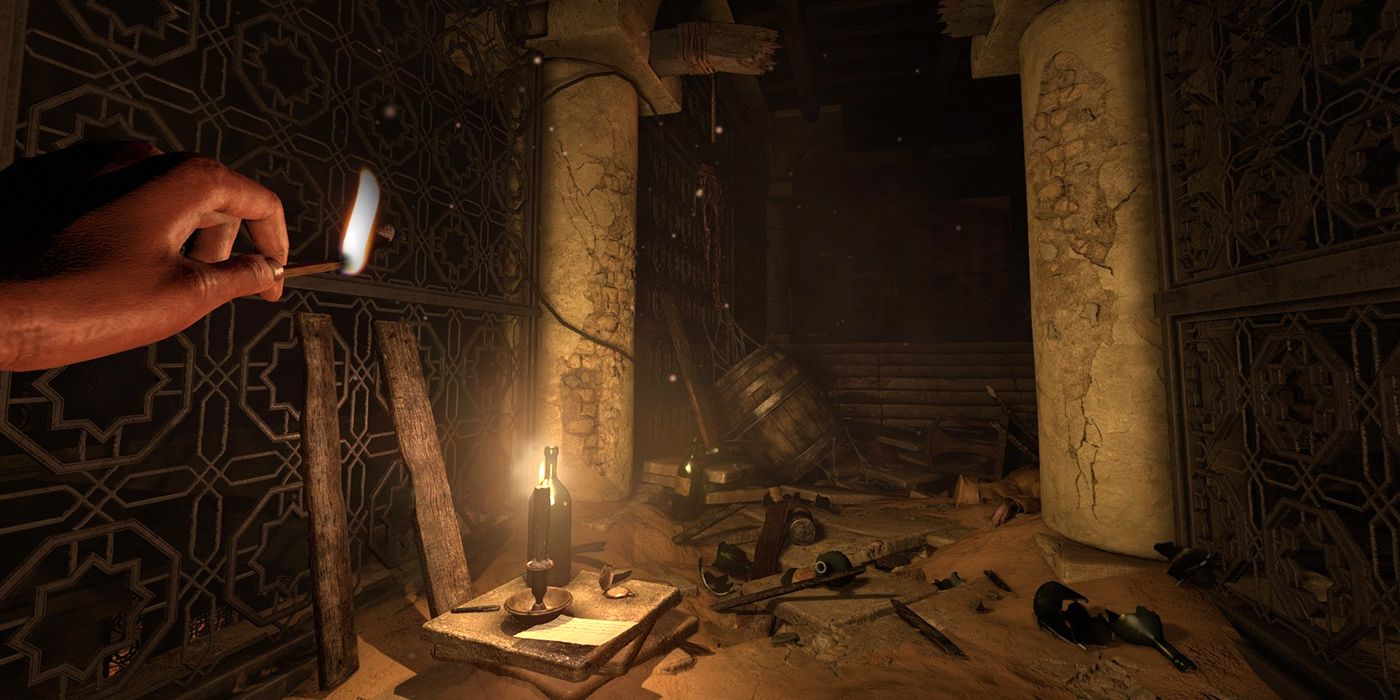Amnesia: Rebirth Devs Talk Horror Game Design | Game Rant

Just in time for Halloween, Amnesia: Rebirth has joined the fray of timely horror games that promise to add adrenaline-pumping frights and suspense-filled exploration to gamers' spooky season. Amnesia: Rebirth, though, comes from an impressive pedigree, with Amnesia: The Dark Descent often remembered as one of the best horror games of all time. In this Game Rant interview, the developers of both The Dark Descent and Rebirth discuss various changes to the horror game formula in Rebirth, the legacy of the Amnesia franchise, and some of their future plans.
Amnesia is known for having an immense influence on modern horror games, pushing the entire genre towards powerless protagonists and psychological themes. However, Amnesia's developers at Frictional games have clearly evolved with the times to update their formula. Luckily, they game plenty of insights on how they go about crafting great horror games. Some portions of this interview have been lightly edited for clarity and brevity.
Q: Amnesia: The Dark Descent played a pretty big role in revitalizing the psychological horror genre for games. Are there any games that may have been inspired by The Dark Descent that have since informed Rebirth?
A: In one sense, I think that all games that have come after Amnesia have been an inspiration. When we did The Dark Descent, playing as a defenseless protagonist was quite uncommon and many players weren’t used to it. This meant we didn't have to try that hard to make the game engaging as the experience was so novel. Now, however, countless games have done the same thing. So that means we have to try much harder in order to craft a compelling horror game.
As for direct inspiration, I have to be a bit selfish and say SOMA. The sort of storytelling we did in that game has had a huge impact on how we designed Rebirth. SOMA taught us that you can make players feel emotions that take hours of buildup to achieve. We’re trying to do this with Rebirth too, but using a more classic Amnesia-style gameplay as the foundation.

Q: Horror games tend to do a lot of things that are typically not used in game design - taking away player control, making areas deliberately confusing or unpleasant, etc. How do you strike a balance between fun and fear? Are there any rules that still apply across all genres of games?
A: You touch upon a very important thing, namely that the main emotion that a horror game tries to evoke - fear - is highly unpleasant. This means you can’t just expose the player to an endless cavalcade of scares. That would just be exhausting, like being stuck on a rollercoaster ride. Instead, you need to dance around the fear and play a lot with foreboding and anticipation.
It is in this space that you also focus much of your gameplay. Horror games are usually less than 10% actual heart-pounding encounters. The rest of the time is spent doing things like sneaking, exploring, solving puzzles and so forth. In all of these activities, you want to convince the player that something might happen, and let that be woven into the gameplay. For example, if the player fixes a puzzle and starts a machine, the machine might be very noisy, and this makes the player worried that it might attract monsters.
This is very different from other genres where you can tackle the desired emotion head on and base the bulk of the game around it. Instead, horror games require you to carefully portion out the dosage.
Q: Often the relief of getting through a difficult section of a horror game is its own reward. To the extent that you can reveal, what is one area of the game that is the “most awful,” or the most relieving to get through?
A: I think Rebirth has quite a few of these. We try to make sure that any intense sequence finishes by leaving the player in a more relaxing environment afterwards. Having ups and downs like this is crucial. It is often the contrast between scenes that make the frightening ones feel really frightening.
However, you can’t make things too predictable either. Then the player will figure out the rhythm of it all, and will no longer be as scared. Evoking terror relies a lot on the player being uncertain. Because of that, when we let the player have a breather, it’s often only for a few seconds and then we hit them with something else. That way we keep uncertainty levels high and the player anxious.
In terms of any specific spot, I don’t think I want to say anything. Rest assured that we have plenty of them. But players will have to figure out where and when themselves.
Q: One thing that has been shown a lot in promotional material is the variety in environments. How does such a variety of areas add to the horror?
A: There are many reasons for having this and why it works to our advantage. One is that we want to simulate a long and harrowing journey for Tasi. In order to do so, we can’t just have the game taking place in similar looking corridors for 10 hours. That will not give that sense of having been through a long trek. So by making sure every level takes place in a new setting or a new time of day or both, we can give a sense of a longer passage of time and longer distances covered. This increases the feeling of loneliness and just pure hardship Tasi goes through.
Another aspect is that in order for players to go through the more oppressive parts of the game, we need to make sure that there is a drive to progress. A good tool for that is to make sure that there is always some new setting to look forward to. You always need to have these sort of tricks in order to get a good balance of just pouring misery on the player versus giving them relief. Coming out the other side with a new setting to explore is a really good counterweight.

Q: What is something you feel the Amnesia franchise offers horror fans that they can't get anywhere else? Is there an element of design that the team prides themselves on?
A: I think that the biggest difference in our games is that we care much more about narrative. I’m not saying that no other games do this, but many horror games only focus on being pure “jump scare generators." There is nothing wrong with this, of course, but we are more interested in tying the horror to a more connected and emotionally deeper narrative. I also think we have a good balance of puzzles, story and tension-filled sections. This is not just true for the Amnesia series but all the other games we’ve made too.
Q: What was the most challenging part of making this game? What is the most challenging part of eliciting fear and unease in players?
A: I think the balance between frustration and making the game feel dark and oppressive is by far the hardest. You want the player to feel a certain amount of “pain” when playing a horror game. If the game is just a long pleasant experience, it will not be much of a horror game. However, if you go too far, the player will be pushed away and not feel part of the fantasy any more. So you need to make sure that you have a good balance of ups and downs. You also need to be careful just how long and much of the horror the player is exposed to.
This becomes especially hard when it comes to difficulty. Too high and it becomes annoying, too low and it stops being scary. Worse is that this varies greatly among players. The problem with frustration - apart from it being irritating in itself - is that it makes the player think about the game in a more abstract manner, instead of being immersed in it.
Q: What do you think is the best part of the game, or the best new feature?
A: The best part is what Tasi goes through. We want players to go into the game not knowing too much about this though.
Q: What is your personal favorite part of the game? What are you most proud of?
A: I think the thing that I'm most proud of is how we've fought so hard to make everything fit together. How the story, gameplay, environments, audio, monsters and cool moments all fuel and feeds off of the central core of the game. I don't think any single aspect of the game feels tacked on or without purpose and I hope this will give players a strong and meaningful experience.
Q: Are there any plans to update Amnesia: Rebirth for next-gen consoles like the PS5, Xbox Series X?
A: We’ve already made sure it is backwards compatible on the PS5, and hopefully we can do the same for Series X. There are no plans to make an updated version though.
[End.]
Amnesia: Rebirth is available for PC and PS4.

Post a Comment